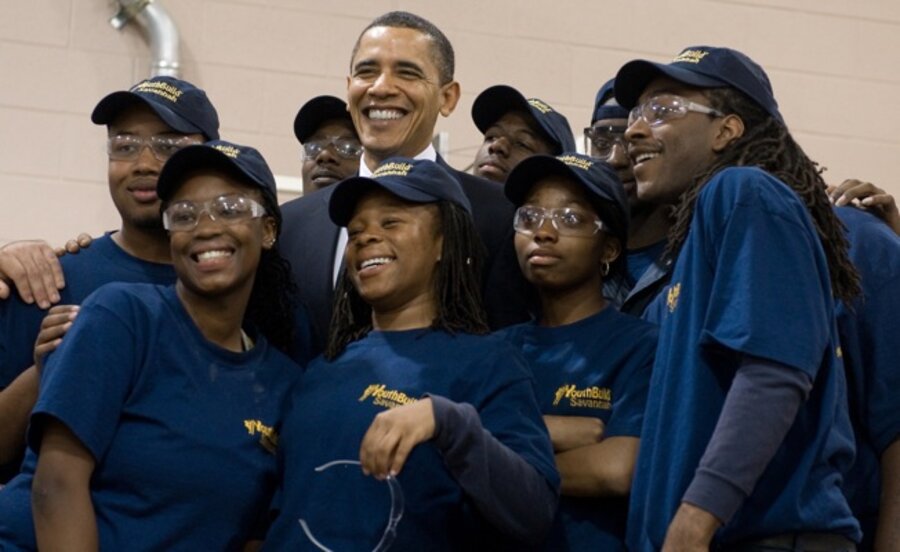Obama's Homestar program: Energy retrofits could take a while
Loading...
President Obama announced a $6 billion program Tuesday to help improve the energy efficiency of American homes.
He hopes the new Homestar program will reemploy workers in the hard-hit construction industry, offer environmental benefits, and rack up energy savings for US consumers.
But it may take a while before the program swings into action, especially its more far-reaching elements. For one thing, the program requires congressional approval. Homestar advocates say the program has bipartisan support, but they decline to predict when Congress will act.
For another, the infrastructure is still being developed to realize the full benefits that Mr. Obama envisions, advocates say.
“I’m convinced that the country that leads in clean energy is also going to be the country that leads in the global economy,” Mr. Obama said, speaking from the Savannah Technical College in Georgia. “I want America to be that nation.”
The problem: There's not enough trained personnel to tackle the more sophisticated pieces of Homestar (named after Energy Star, the government’s popular energy efficiency labeling system).
With unemployment rates around 25 percent, the construction industry has a large pool of skilled workers anxious to get to work. They'll be able to handle the first level of retrofits, known as silver star.
Silver star will consist of rebates of 50 percent of the cost for simple upgrades – new insulation, duct sealing, or water heaters, for example – for a total of up to $1,000 or $1,500.
The gold star level will take more training. Under gold star, contractors evaluate the entire house, recommending a wide suite of improvements to realize 20 percent energy savings. If consumers achieve that, they can get a $3,000 rebate plus additional amounts for any energy savings above 20 percent.
“It’s a chicken-and-egg kind of game right now,” says Matt Golden, president of a San Francisco-based home-retrofitting firm and a leading player in creating the Homestar program.
For the gold level, contractors will need to be accredited by the Building Performance Institute. That process typically involves a few days of training and two examinations, one written and one administered in the field. It can take eight weeks to schedule an exam and typically a few months to complete entire process if starting from scratch. Experienced contractors can opt out of the training, if they wish, and proceed straight to the exam.
But there’s no reason for contractors to jump through those hoops until there’s the market demand for it, says Mr. Golden.
Currently, experts estimate there are about 1,000 to 3,000 contractors who are certified for gold-level retrofitting.
“The majority of money is targeted to silver-star rebates,” explains Steve Cowell, CEO of Conservation Services Group in Westborough, Mass and a member of the Homestar Coalition, a panel advising government officials on the legislation. “We’re hoping to get 500,000 homes done under gold star, which would mean that we’d need to double the number of [certified] contractors.”
Mr. Cowell estimates there are about 1,000 contractors currently certified and that each contracting crew could do 250 retrofitting jobs per year.
This means homeowners may experience long waits for energy audits and gold-star retrofit projects.But the lag should only be two to three months before enough contractors are trained, Golden says.
Certification runs roughly $800 to $1,200 and contractors could need up to an additional $5,000 in equipment to perform retrofits (beyond the standard equipment required for most construction work). There is funding available to offset some of those costs, but amounts vary by state.
"They're not huge costs, but it is an investment," says Golden. "We're building the foundation for a truly market-based program in the future that won't need government subsidies."





